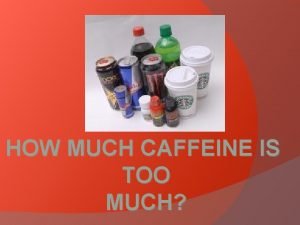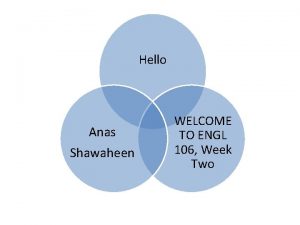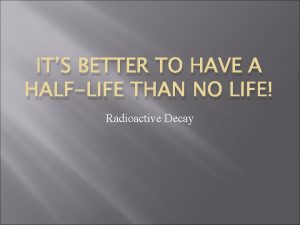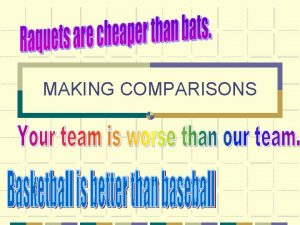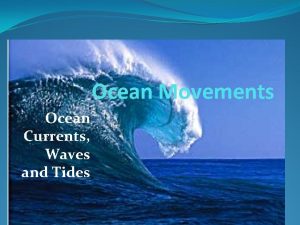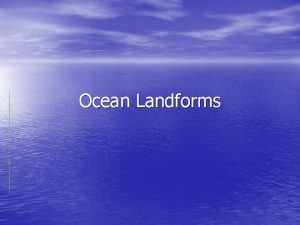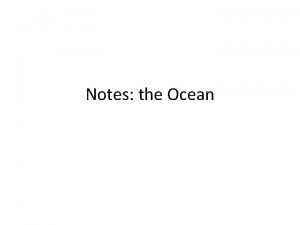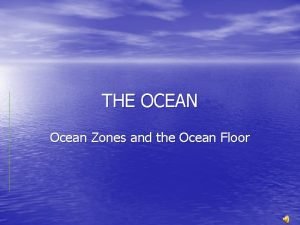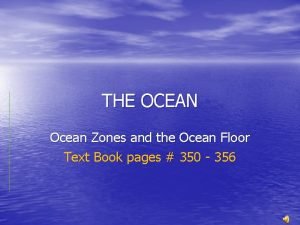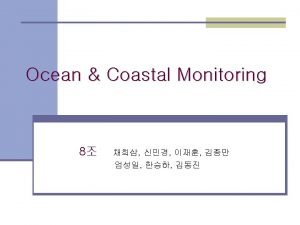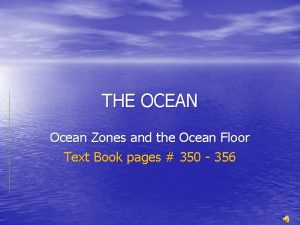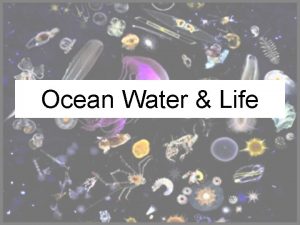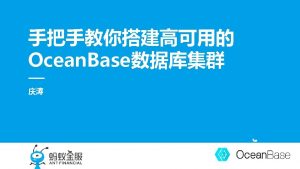The Ocean is much much deeper than anything
















- Slides: 16

The Ocean is much, much deeper than anything on land is high…

Did you know? ● There is still much we don't know about the ocean depths that makes being a scientist in this exciting field such an adventure. ● New creatures are still being discovered every day! ● There are more species in the ocean there are on the entire surface of the land….

There are…… 3 Zones! ● Scientists have organized the sea ● Surface into layers/zones because the living Zone environment changes with each ● Transition different layer. ● Each layer is usually distinguished by the amount of sunlight it receives, the depths it occupies, temperature, salinity, and the degree of water pressure found there. Zone ● Deep Zone

Our first stop along the way… From the surface to about 200 meters down… ● LOTS of life ● Producers: phytoplankton → access to SUN! ● Consumers: Small and large fish, oxygen-breathing mammals ● Intertidal zone: Located near the shoreline, find clams and other mollusks

● This allows producers that use photosynthesis to grow here. ● Kelp ● Seaweed ● Algae ● MOST OF THE LIVING THINGS IN THE OCEAN LIVE HERE!

● Lots of animals live here:

In the Middle… ● Less light here. It’s getting much darker and colder. ● Fewer living things because there’s little light for photosynthesis.


Deepest, darkest… ● Called the “Midnight Zone” because there is NO light. ●Life that exists relies on dead organisms from higher levels. ●The organic “rainfall” includes dead microscopic organisms, such as phytoplankton and bacteria, and carcasses of larger organisms sinking down to the sea bed. ●The organisms have adapted to the harsh environment.




Temperature and Salinity… Warm Cold BRRR!!

What makes water unhealthy? ? Healthy Unhealthy • No/Low turbidity (clear water) • Neutral p. H levels (7) • High dissolved oxygen = cold water • Many bioindicators are present • Low levels of nitrates • High turbidity (dirty, cloudy) • High (8 -14) or low levels of p. H (0 -6) • Low dissolved oxygen = hot water • Low or no bioindicators • High levels of nitrates = fertilizer = algal blooms

Water Contamination ● 2. 5 billion people do not have access to clean water. ● 250 million people worldwide get diseases from contaminated water ● 15 million children under the age of 5 die every year due to water contamination.

World Health EPIDEMIC An outbreak of a disease that affects many people in an area Ex. flu, malaria, PANDEMIC An outbreak of a disease that spreads across countries, usually worldwide Ex. Swine Flu, Ebola, Black
 Your love is deeper than the ocean higher than the heavens
Your love is deeper than the ocean higher than the heavens Into the heart of jesus deeper and deeper i go
Into the heart of jesus deeper and deeper i go Ocean ocean convergent boundary
Ocean ocean convergent boundary Red and blue ocean strategy
Red and blue ocean strategy Divergent vs convergent boundaries
Divergent vs convergent boundaries Chapter 15 ocean water and ocean life
Chapter 15 ocean water and ocean life Ocean ocean convergent boundary
Ocean ocean convergent boundary Scrat's continental crack-up
Scrat's continental crack-up Convergent plate boundaries
Convergent plate boundaries Convergent oceanic oceanic plate boundary
Convergent oceanic oceanic plate boundary How much is too much plagiarism
How much is too much plagiarism How much caffeine in a snickers bar
How much caffeine in a snickers bar To whom much is given much is required meaning
To whom much is given much is required meaning Communication-it's much easier than done
Communication-it's much easier than done Less than key words
Less than key words Half life more than 2 less than 4
Half life more than 2 less than 4 Odd one out fractions
Odd one out fractions











